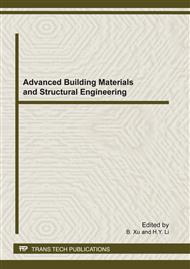[1]
L.B. Almedia. The fractional Fourier transform and time-frequency reprensentations, IEEE Transactions on Signal Processing, vol. 42, p.3084–3091, November (1994).
DOI: 10.1109/78.330368
Google Scholar
[2]
H. M. Ozaktas, O. Arikan, A. Kutay and C. Bozdagi. Digital Computation of the Fractional Fourier Transform, IEEE Transactions on Signal Processing, vol. 44, p.2141–2150, September (1996).
DOI: 10.1109/78.536672
Google Scholar
[3]
M. Barbu, E. J. Kaminsky and R. E. Trahan, Sonar signal enhancement using fractional Fourier transform, Proceedings of SPIE, vol. 5807, p.170–177, (2005).
DOI: 10.1117/12.604625
Google Scholar
[4]
I. P. Du and G. Z. Su, Multi-moving Targets detetion based on p.0 order CWD in MMW radar, Systems Engineering and Electroncis, vol. 27, p.1523–1527, September (2005).
Google Scholar
[5]
S. N. Zhang, H. C. Zhao and B. Wu. LFM Interference Excision Technique in Pseudo-random Code Fuse Based on Fractional Fourier Transform, ACTA ARMAMENTARII, vol. 27, p.32–36, January (2006).
Google Scholar
[6]
P. Chen, C. H. Hou, X. C. Ma, and Y. H. Liang, Detection Algorithm for the LFM Echo of Underwater Moving Targets Using the Discrete Fractional Fourier Transform, Elementary Electroacoustics, vol. 9, p.9–12, June (2006).
Google Scholar
[7]
M. Barbu, E. J. Kaminsky and R.E. Trahan. Fractional Fourier Transform for Sonar Signal Processing, IEEE Transactions on Signal Processing, vol. 34, p.1–6, September (2005).
DOI: 10.1109/oceans.2005.1639989
Google Scholar
[8]
Y. Q. Dong, R. Tao, S. Y. Zhou and Y. Wang. SAR Moving Target Detection and Imaging Based on Fractional Fourier Transform, ACTA ARMAMENTARII, vol. 20, p.132–136, May (1999).
Google Scholar
[9]
T. Back, U. Hammel and H. P. Schwefel. Evolutionary computation: Comments on the history and current state, IEEE Transactions on Evolutionary Computation, vol. 1, p.3–17, (1997).
DOI: 10.1109/4235.585888
Google Scholar
[10]
S. K. Pal, S. Bandopadhyay and C. A. Murthy, Genetic Algorithms for generation of Class Boundaries, IEEE Transactions on Systems, Man and Cybernetics Part B: Cybernetics, vol. 28, p.816–828, December (1998).
DOI: 10.1109/3477.735391
Google Scholar
[11]
L. Wang and Q. D. Wu. Ant system algorithm in continuous space optimiziaion, Control and Decision, vol. 18, p.45–48, January (2003).
Google Scholar
[12]
N. Monmarche, G. Venturini and M. Slimane On how Pachycondyla apicalis ants suggest a new search algorithm, Future Generation Computer Systems, vol. 16, p.937–946, (2000).
DOI: 10.1016/s0167-739x(00)00047-9
Google Scholar
[13]
E. K. Parsopoulos and M. N. Vrahatis On the computation of all global minimizers through particle swarm optimization, IEEE Transactions on evolutionary computation, vol. 8, p.211–224, June, (2000).
DOI: 10.1109/tevc.2004.826076
Google Scholar
[14]
M. A. Abido. Optimal design of power system stabilizers using particle swarm optimization, IEEE Transactions Energy Conversion, vol. 17, p.406–413, September, (2002).
DOI: 10.1109/tec.2002.801992
Google Scholar
[15]
B. Li and W. S. Jiang. Chaos optimization method and its application, Control Theory and Application, vol. 14, p.613–615, August, (1997).
Google Scholar


